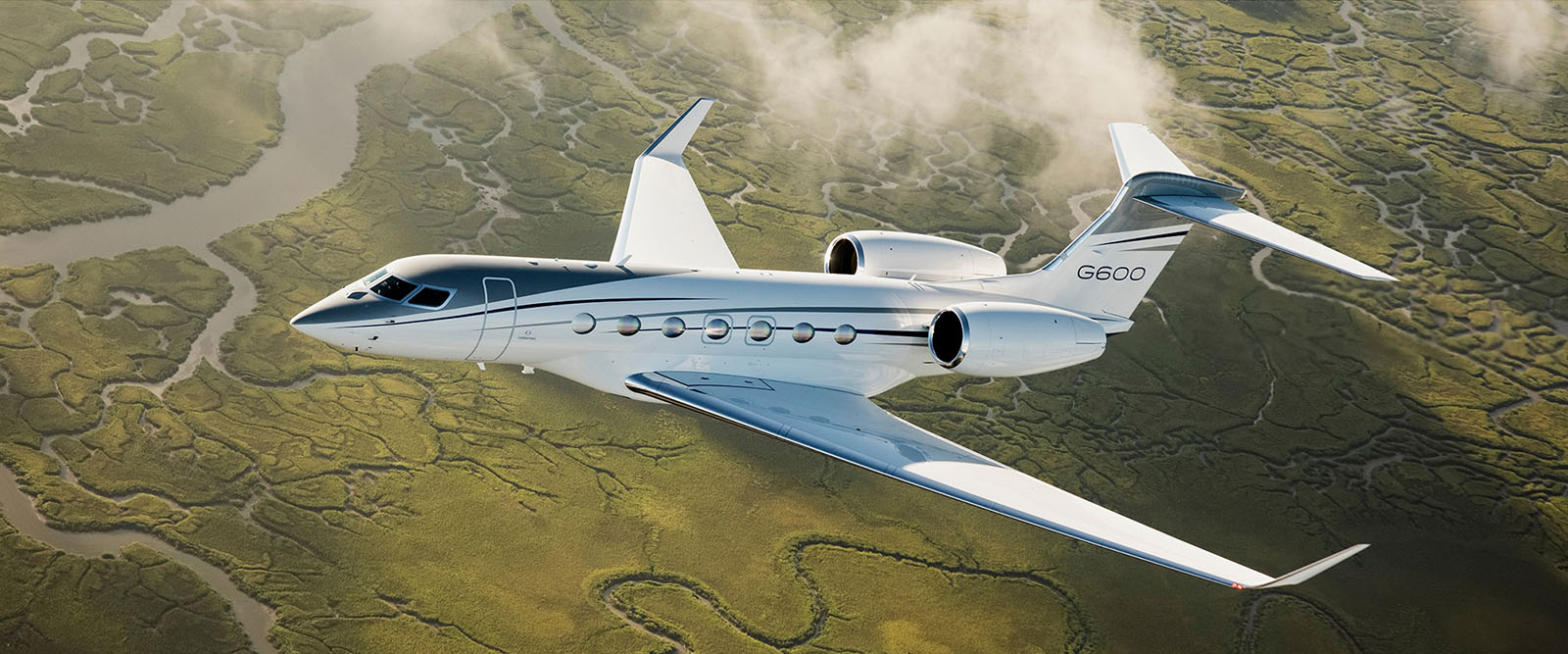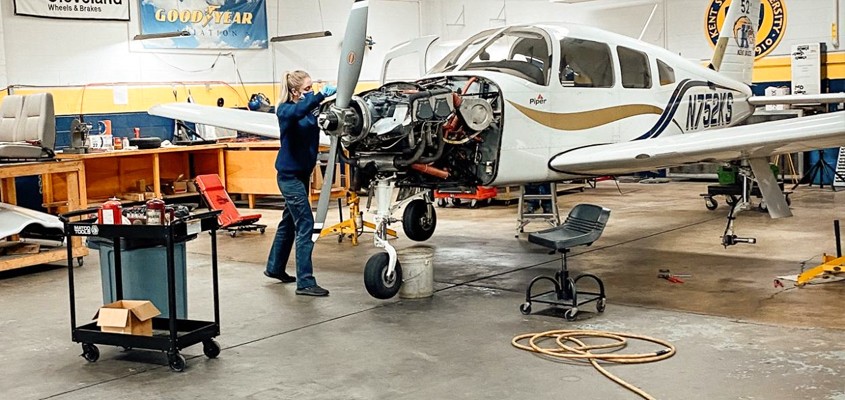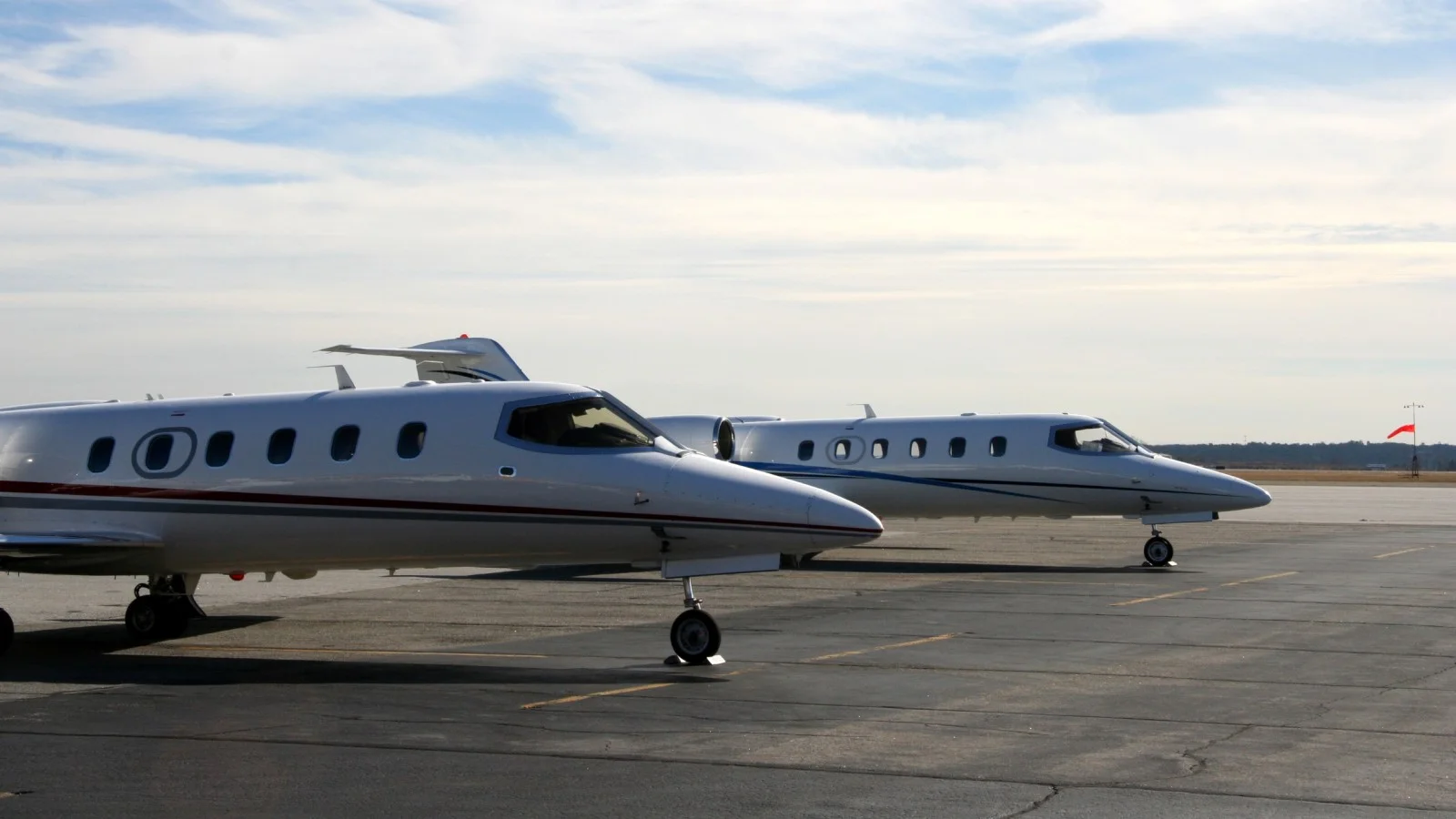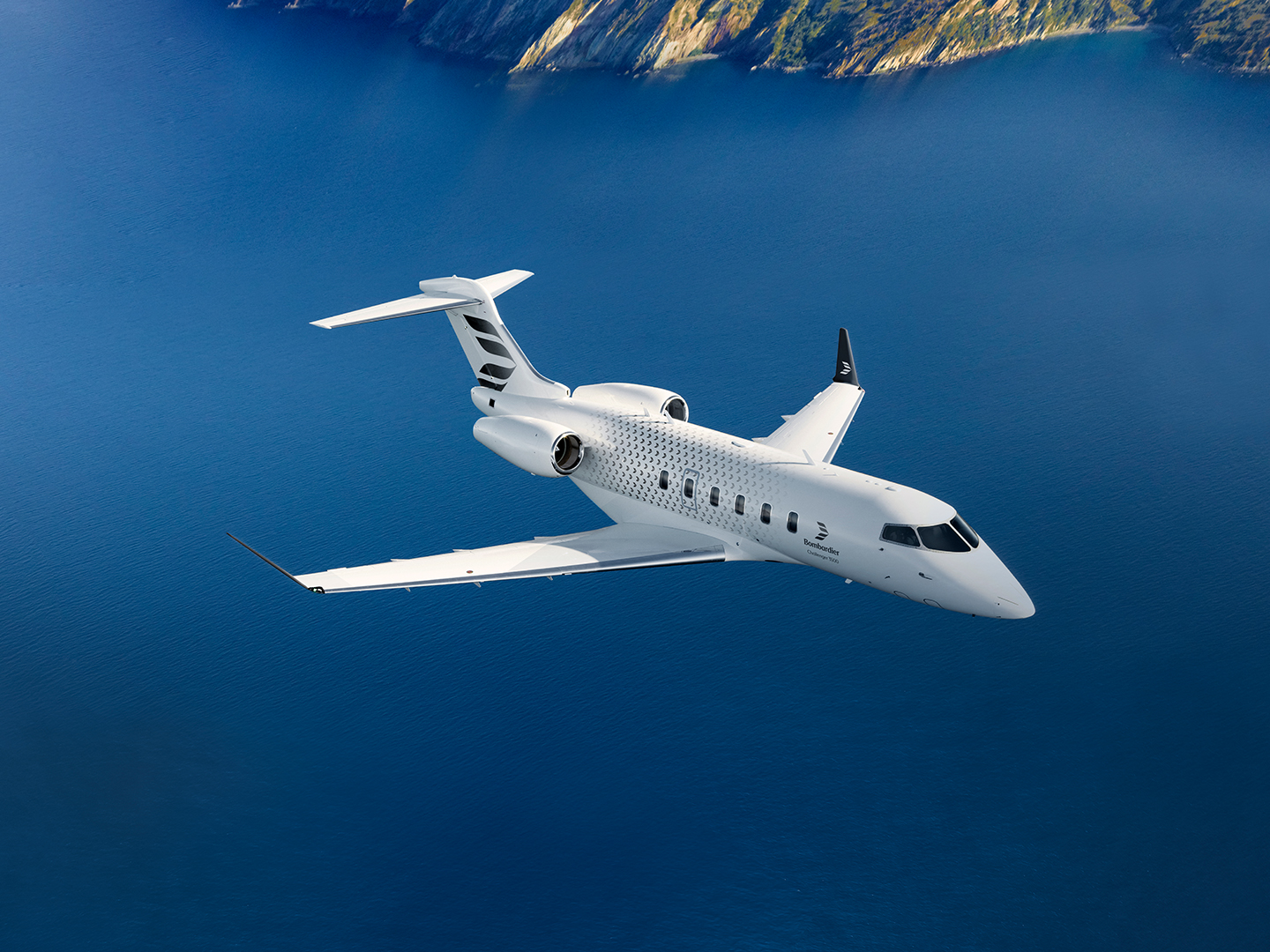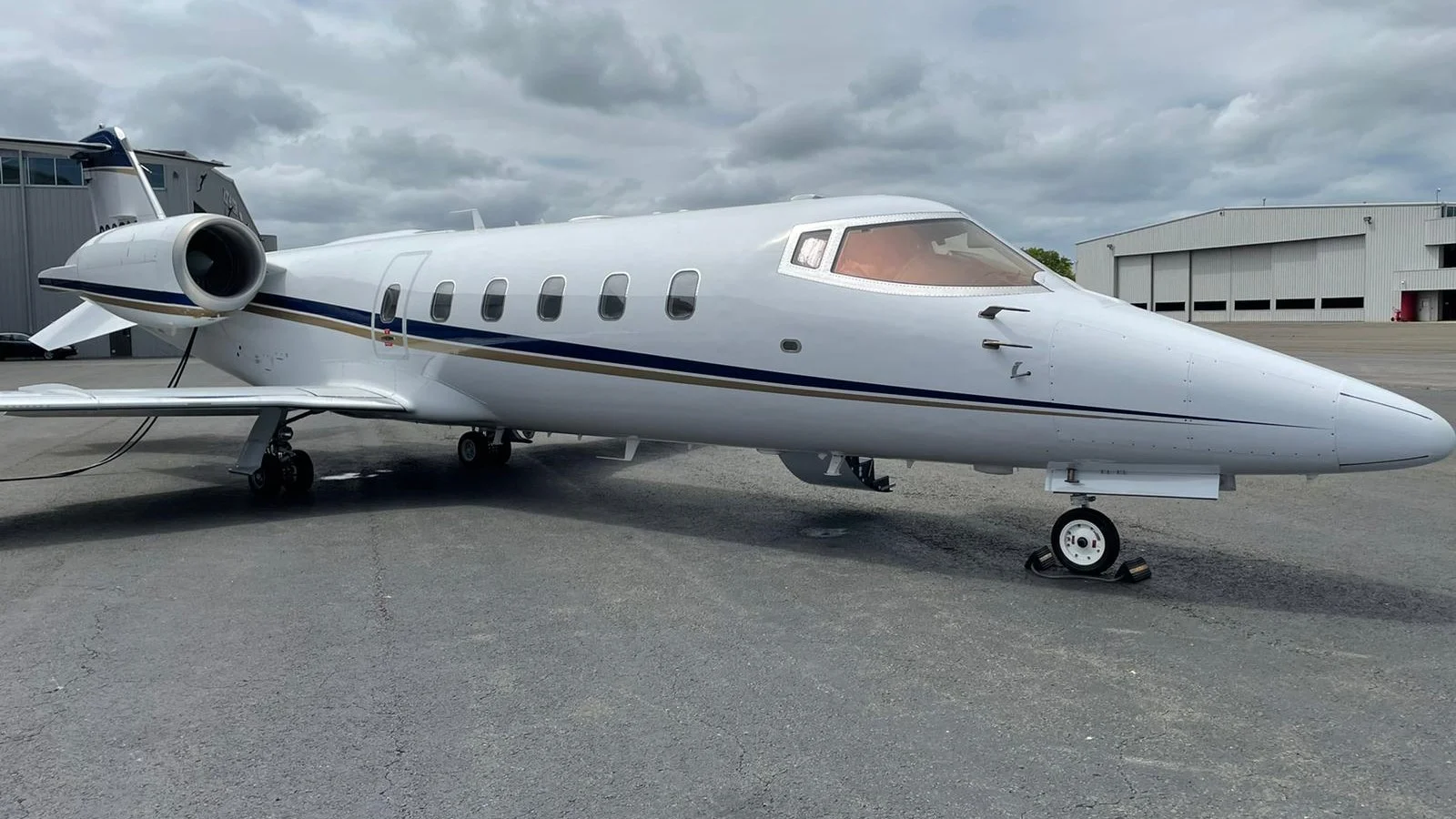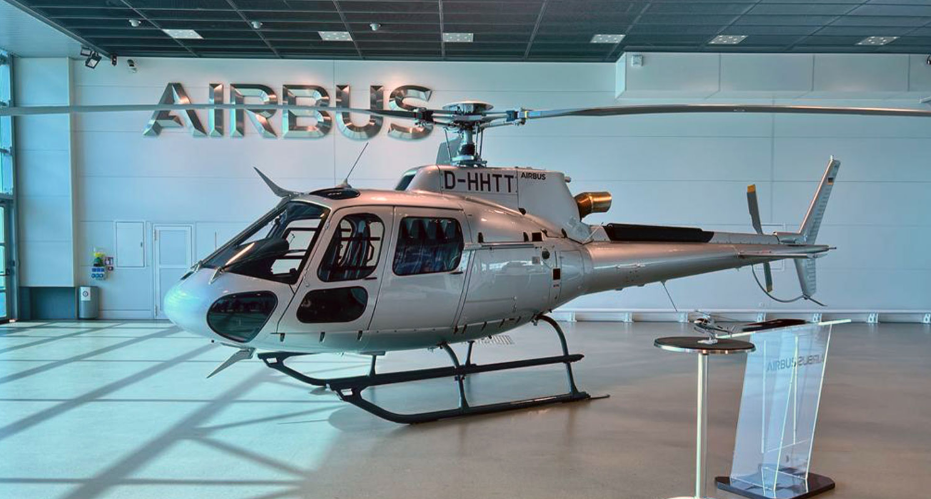The Learjet 45: A Pioneering Mid-Size Jet That Changed Everything (And Almost Didn’t)
7 min read
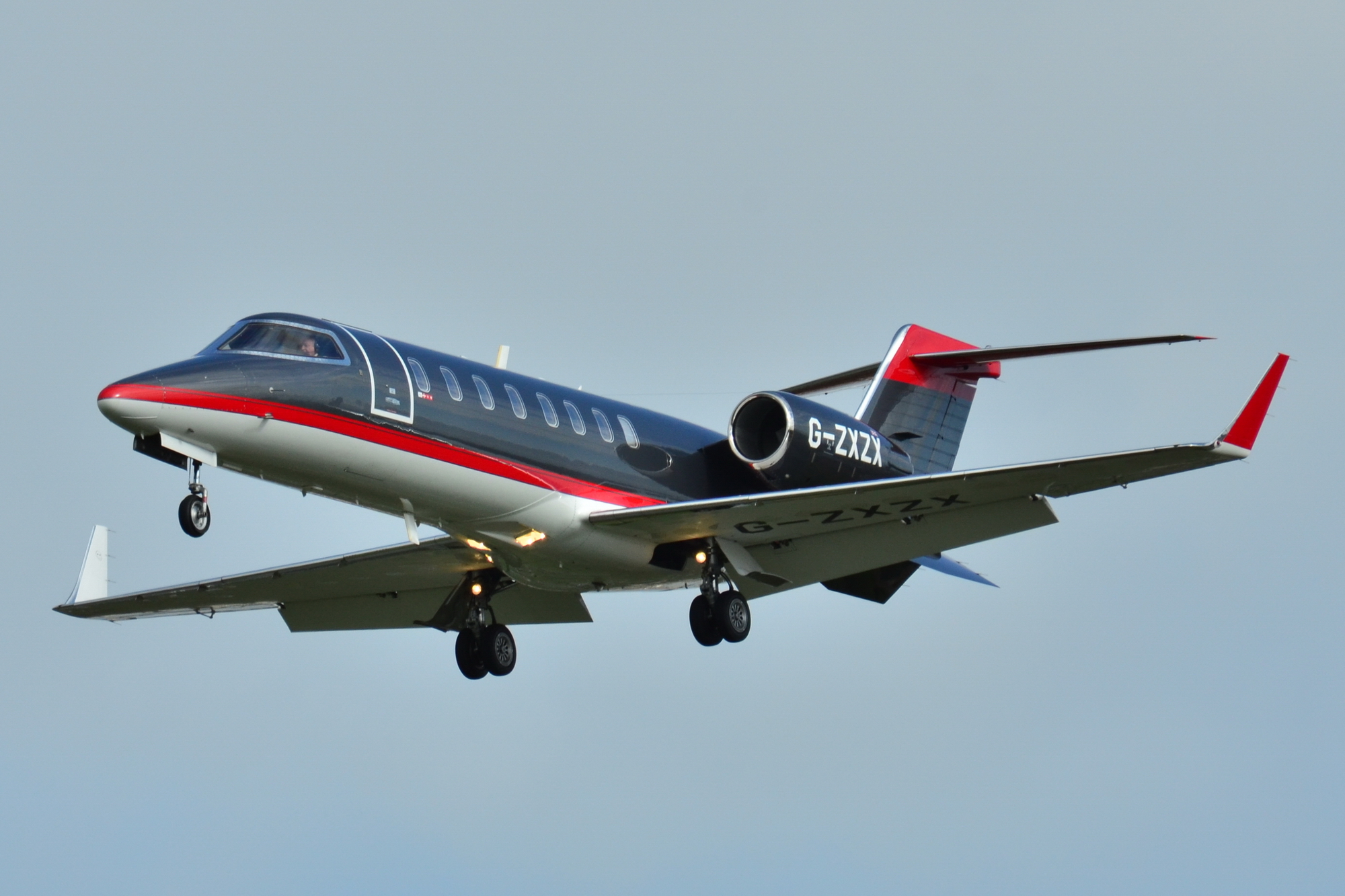
When Bombardier's Learjet Division rolled out the Learjet 45 back in 1998, it wasn't just another variant rolling off the production line. This was something different. The LJ45 was Bombardier's answer to a rapidly evolving business aviation market, aiming squarely at what the industry dubbed the "super-light" category, trying to thread the needle between the smaller Learjet 31/40 series and the bigger Learjet 60.
By the time production wrapped up in 2007, 239 base Model 45s had rolled out of the factory, 642 aircraft total when you include all variants by 2012. Not bad for a completely new design that, as we'll see, had more than its share of growing pains.
Development: The Long Road to Reality

The story really begins in 1989, three years before most people even heard about the Learjet 45. That's when Bombardier's engineers started sketching out what would become their most ambitious Learjet project.
This wasn't going to be another derivative. Customer feedback had been pretty clear about what was wrong with existing Learjets: cramped cabins, limited range, and reliability issues that were becoming harder to ignore.
So when Bombardier officially unveiled the Model 45 at the 1992 NBAA convention in Dallas, they were essentially making a promise they'd spend the next six years trying to keep.
And honestly? Those six years were rougher than anyone expected.
Early production was, to put it mildly, a disaster. Delivery delays stretched out for over two years for some customers. By late 1998, the problems weren't just about timing anymore.
The aircraft that were reaching customers had serious issues:
- Cracked windshields that seemed to appear out of nowhere
- Pressurization systems that couldn't maintain cabin altitude properly
- Faulty fasteners that raised questions about basic assembly quality
- Electrical issues that kept maintenance crews busy
Then came August 2003, and what many consider the lowest point in the Learjet 45's history. The FAA grounded the entire fleet (yes, all of them) due to a defective horizontal stabilizer actuator nut. For about a month, every single Learjet 45 in service was stuck on the ground. That's the kind of thing that can kill an aircraft program entirely.
But somehow, it didn't.
Bombardier kept working through the problems, and reliability gradually improved. By late 2006, over 300 units had been delivered, and the horror stories from the early days were becoming just that, stories. By November 2010, more than 500 aircraft were in service, and the type was finally earning the reliability reputation that Learjet needed.
Performance: Numbers That Actually Deliver
Here's where the Learjet 45 finally lived up to the family name. After all those early problems, what emerged was an aircraft with genuinely impressive performance characteristics that made sense for the mid-size market.
The twin Honeywell TFE731-20-AR engines deliver 3,500 pounds of thrust each, not earth-shattering numbers, but perfectly matched to the aircraft's 20,500-pound maximum takeoff weight.
What's more interesting is how efficiently they use that power. The LJ45 will cruise at Mach 0.78, hitting 430 knots true airspeed, which keeps it competitive with jets costing significantly more to operate.
But speed was never really the question with any Learjet. The impressive part is the range: 1,971 nautical miles with four passengers and reserves. That's enough to fly from New York to Denver, or Los Angeles to Chicago, without a fuel stop. For a jet this size, those numbers open up a lot of mission profiles that smaller aircraft just can't handle.
The climb performance is where you really feel that Learjet DNA. At 4,500 feet per minute, this thing gets up and out of busy airspace quickly. Service ceiling hits 51,000 feet, putting you well above most weather and commercial traffic. Short field performance is respectable, too:
- Takeoff distance: 4,350 feet at sea level
- Landing distance: 2,690 feet
- Can operate from airports that bigger jets can't touch
Empty weight of 13,790 pounds means you've got nearly 7,000 pounds of useful load to work with. That's fuel, passengers, baggage, and anything else you need to carry. With full fuel (6,062 pounds), you're still looking at decent payload capacity, though, like any aircraft, it becomes a trade-off between range and load.
Cabin Comfort: Finally, a Learjet You Don't Mind Being Inside
For decades, Learjets were notorious for feeling like flying pencils, fast, sure, but about as comfortable as a sardine can with wings. The Model 45 was Bombardier's attempt to change that reputation, and honestly? They mostly succeeded.

The numbers tell part of the story: 19.8 feet of cabin length, 5.1 feet wide, and 4.9 feet high. That translates to standing headroom of about 5 feet 9 inches if you're in the center of the cabin with the flat floor. It's not exactly spacious by today's standards, but for a mid-size jet from the late '90s, it was a significant step up from what Learjet passengers were used to.
The standard configuration puts 8-9 passengers in a double-club layout, and this is where the aircraft really shows its improvement over earlier Learjets. Those leather seats don't just look good, they actually work.
Each seat tracks, swivels, and reclines fully, with fold-down tables built right into the armrests. It's the kind of setup that makes a 2-3 hour flight genuinely pleasant instead of something you just endure.
One of the smartest design choices was the fully enclosed aft lavatory that doubles as a ninth seat when needed. The forward galley area can be equipped with the usual business jet amenities: microwave, coffee maker, and ice drawer. You've got 65 cubic feet of baggage space split between 15 cubic feet internal and 50 cubic feet external, which is adequate for most trips.
Compared to its peers, the Learjet 45 offered superior headroom and legroom for its class. But let's be honest about the limitations too; that narrower fuselage can still feel pretty snug if you're over six feet tall. This isn't a cabin you'd want to spend 6-7 hours in, but for its intended mission of 2-3-hour flights, it works well.
Avionics: Advanced for Its Time, Showing Its Age Now
When the Learjet 45 rolled out in 1998, its Honeywell Primus 1000 integrated avionics suite was genuinely impressive. This was still the era when many business jets were flying around with steam gauges and separate black boxes for every function. The LJ45's four-screen Electronic Flight Instrument System (EFIS) felt almost futuristic.
Those original cathode-ray tube displays might look old now, but they were a significant step forward in cockpit integration at the time. The system bundled everything together: dual attitude/heading reference systems, dual air data computers, and an integrated radio sensor system that handled navigation and communication tasks.

But here's the thing about avionics: they age faster than airframes. What was cutting-edge in 1998 is decidedly dated by 2025 standards. Those CRT displays, while upgradable to LCD panels for reduced maintenance, still represent 1990s technology. The processing power and capability that seemed impressive back then now feel sluggish compared to modern glass cockpits.
Today's Learjet 45 operators typically face a decision: live with increasingly obsolete equipment or invest in significant upgrades. The mandatory items alone are expensive enough:
- ADS-B Out compliance (no choice here)
- FANS' capability for oceanic operations
- Various navigation database updates to meet current requirements
Then there are the nice-to-have upgrades that can transform the flying experience—modern glass cockpit enhancements, synthetic vision systems, and Wi-Fi connectivity that passengers expect. The problem? These upgrades can run $300,000 to $500,000, which is a substantial investment in an aircraft that might be worth $2-4 million.
Pricing and Operating Costs: The Economics of Ownership
Since production ended in 2007, the Learjet 45 market is entirely pre-owned, and like most used aircraft, condition matters more than age. For a 1998 model, essentially the first full production year, you're looking at acquisition costs ranging from about $2 million to $3.8 million.
Current market listings show the full spectrum: tired examples needing work start around $1.95 million, while pristine, recently updated aircraft can command up to $4.85 million. The sweet spot seems to be around $2.8 million for an aircraft with reasonable time, decent maintenance records, and at least some modern upgrades.
Here's where it gets interesting from an operating cost perspective. The Learjet 45 hits that middle ground between smaller light jets and larger midsize aircraft, and the economics reflect that positioning.
Direct hourly operating costs run about $2,120 to $2,200, which works out to roughly $9.52 per nautical mile. That includes fuel, maintenance, and engine reserves; the stuff you can't avoid no matter how you try. But the real numbers depend heavily on how much you fly:
- 200 hours annually: Total costs around $924,613
- 400 hours annually: About $1,454,759
- Fixed costs alone: Approximately $522,045 per year
The positioning against competitors is pretty clear; it's more expensive to operate than Citation CJ series aircraft, but significantly cheaper than larger midsize jets. For operators who need more capability than a light jet but don't want to step up to the operating costs of something like a Challenger or Hawker, the numbers make sense.
The Bottom Line: Strengths, Weaknesses, and Reality
After nearly three decades, the Learjet 45 has settled into what it always should have been: a solid, if imperfect, mid-size performer with some genuine strengths and a few irritating weaknesses.
What it does well:
- Speed and climb performance that still impresses
- Short-field capability (4,350-foot takeoff) opens up airports that bigger jets can't use
- Operating costs that make sense for the capability you get
What drives you crazy:
- That cramped cockpit feels tight even by business jet standards
- Ground handling with the overly sensitive steer-by-wire nosewheel
- Hot-and-high performance limitations without upgrades
- Aging avionics that constantly remind you this is 1990s technology
The early reliability problems are mostly ancient history now, but they still affect resale values and market perception. If you can find a well-maintained example that's had the major systems updated, you're looking at an aircraft that delivers genuine utility for reasonable money.


